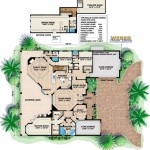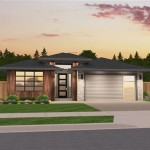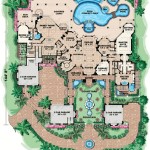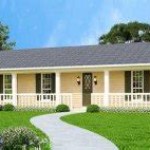Dog house build plans provide detailed instructions for constructing a comfortable and weather-resistant shelter for your canine companion. These plans include step-by-step directions, material lists, and often detailed diagrams to guide you through the building process.
With various designs to choose from, these plans cater to different dog breeds, sizes, and outdoor environments. Whether you want to provide basic protection from the elements or create an elaborate shelter with features like insulation and heating, there’s a plan to suit your needs.
Moving on, this article will delve into the specific steps involved in selecting and using dog house build plans to ensure a successful and rewarding building experience.
Dog house build plans should consider the following key points to ensure a successful and comfortable shelter for your canine companion:
- Size and breed suitability
- Material durability and insulation
- Roof design for drainage
- Ventilation for airflow
- Entry point dimensions
- Foundation for stability
- Hardware and assembly
- Customization options
- Cost and availability
By carefully considering these factors, you can select the most appropriate dog house build plans to meet the specific needs of your furry friend.
Size and breed suitability
Choosing the right size and breed-suitable dog house is crucial for your dog’s comfort and well-being. The size of the dog house should allow your dog to stand up, turn around, and lie down comfortably. A dog house that is too small can be cramped and uncomfortable, while one that is too large can be drafty and difficult to heat.
- Measure your dog. To determine the appropriate size for your dog house, measure your dog from the tip of their nose to the base of their tail. This measurement will give you the length of the dog house. To determine the height of the dog house, measure your dog from the top of their head to the ground. Add 2-4 inches to both the length and height measurements to allow for your dog to move around comfortably.
- Consider your dog’s breed. Different breeds of dogs have different needs when it comes to shelter. For example, breeds that were originally bred for cold climates, such as huskies and malamutes, may need a well-insulated dog house with a draft-free design. Breeds that were originally bred for warm climates, such as greyhounds and whippets, may prefer a dog house with good ventilation and a raised floor to keep them off the cold ground.
- Think about how your dog uses their house. If your dog is primarily going to use their house for sleeping, then a smaller house may be sufficient. However, if your dog is going to be spending a lot of time in their house, such as during the day while you’re at work, then you may want to choose a larger house with more room to move around.
- Allow for growth. If you have a puppy, you may want to choose a dog house that is slightly larger than what they need right now. This will allow them to grow into the house and use it for longer.
By following these tips, you can choose the right size and breed-suitable dog house for your furry friend.
Material durability and insulation
The durability and insulation of the materials used in your dog house build plans are important considerations for ensuring your dog’s comfort and well-being. The materials you choose should be able to withstand the elements and provide adequate insulation to keep your dog warm in the winter and cool in the summer.
- Durability. The materials you choose for your dog house should be durable enough to withstand the elements and everyday use. This means choosing materials that are resistant to rot, decay, and insect damage. Some good options for durable materials include pressure-treated lumber, cedar, and vinyl.
- Insulation. The insulation value of the materials you choose for your dog house will determine how well it can keep your dog warm in the winter and cool in the summer. There are a variety of insulation materials available, including fiberglass, foam, and straw. The type of insulation you choose will depend on your climate and your dog’s needs.
- Combination of materials. For the best results, consider using a combination of durable and insulating materials in your dog house build plans. For example, you could use pressure-treated lumber for the frame of the house and cedar for the siding. You could also use fiberglass insulation in the walls and roof of the house.
- Climate considerations. When choosing materials for your dog house, it is important to consider your climate. If you live in a cold climate, you will need to choose materials that are well-insulated to keep your dog warm. If you live in a warm climate, you will need to choose materials that are breathable and well-ventilated to keep your dog cool.
By carefully considering the durability and insulation of the materials used in your dog house build plans, you can ensure that your dog has a comfortable and safe place to sleep and relax.
Roof design for drainage
The roof of your dog house is an important part of the structure, as it protects your dog from the elements. A well-designed roof will shed water quickly and efficiently, preventing leaks and keeping your dog dry and comfortable. There are a few different roof designs that you can choose from, each with its own advantages and disadvantages.
Shed roof. A shed roof is a simple and inexpensive roof design that is easy to build. It consists of two planes that slope down from the front to the back of the house. The slope of the roof should be steep enough to allow water to drain off quickly, but not so steep that it becomes difficult to access the roof for maintenance.
Gable roof. A gable roof is a more complex roof design than a shed roof, but it is also more durable and weather-resistant. It consists of two planes that slope down from the ridge of the roof to the eaves. The pitch of the roof should be steep enough to allow water to drain off quickly, but not so steep that it becomes difficult to access the roof for maintenance.
Hip roof. A hip roof is a more complex roof design than a gable roof, but it is also the most durable and weather-resistant. It consists of four planes that slope down from the ridge of the roof to the eaves. The pitch of the roof should be steep enough to allow water to drain off quickly, but not so steep that it becomes difficult to access the roof for maintenance.
When choosing a roof design for your dog house, it is important to consider the climate in which you live. If you live in an area with heavy rainfall, you will need to choose a roof design that is able to shed water quickly and efficiently. If you live in an area with high winds, you will need to choose a roof design that is able to withstand strong winds.
Ventilation for airflow
Proper ventilation is essential for maintaining a healthy and comfortable environment inside your dog house. Without adequate ventilation, the air inside the house can become stale and humid, which can lead to a number of health problems for your dog, including respiratory problems and skin infections.
There are a few different ways to provide ventilation for your dog house. One way is to install vents in the walls or roof of the house. Vents allow air to circulate in and out of the house, helping to keep the air fresh and dry. Another way to provide ventilation is to leave a small gap between the bottom of the door and the floor. This gap will allow air to circulate under the door and help to prevent the air inside the house from becoming stagnant.
The size and number of vents you need will depend on the size of your dog house and the climate in which you live. If you live in a warm climate, you will need to provide more ventilation than if you live in a cold climate. You should also make sure that the vents are placed in a way that prevents drafts from blowing directly on your dog.
In addition to vents, you can also improve ventilation by elevating your dog house off the ground. This will allow air to circulate under the house and help to prevent moisture from building up.
By providing adequate ventilation for your dog house, you can help to ensure that your dog has a healthy and comfortable place to sleep and relax.
Entry point dimensions
The entry point of your dog house is an important consideration, as it needs to be large enough for your dog to enter and exit comfortably, but not so large that it allows drafts or predators to enter. The height of the entry point should be about 6 inches shorter than the height of your dog at the shoulder. The width of the entry point should be about 2 inches wider than the width of your dog’s shoulders.
If you have a large dog, you may want to make the entry point even larger. You should also make sure that the entry point is low enough to the ground so that your dog can easily step inside. If the entry point is too high, your dog may be reluctant to use the house.
The shape of the entry point is also important. A rectangular entry point is the most common, but you can also choose a rounded or arched entry point. A rounded or arched entry point can help to prevent drafts from entering the house.
The location of the entry point is also important. The entry point should be placed on the side of the house that is facing away from the prevailing wind. This will help to prevent drafts from entering the house.
By carefully considering the entry point dimensions, you can ensure that your dog has a comfortable and safe place to enter and exit their house.
Foundation for stability
A solid foundation is essential for the stability of your dog house. A well-built foundation will help to prevent the house from sinking or shifting, and it will also help to protect the house from the elements. There are a few different ways to build a foundation for your dog house, but the most common method is to use concrete blocks.
- Level the ground. The first step is to level the ground where you want to place the dog house. This will help to ensure that the foundation is level and that the house will not sink or shift.
- Lay down a layer of gravel. Once the ground is level, you can lay down a layer of gravel. The gravel will help to drain water away from the foundation and prevent the ground from freezing under the house.
- Place the concrete blocks. The next step is to place the concrete blocks on the gravel. The blocks should be placed in a level and stable manner. You can use a level to make sure that the blocks are level.
- Fill in the gaps between the blocks. Once the blocks are in place, you can fill in the gaps between the blocks with gravel or sand. This will help to keep the blocks in place and prevent them from shifting.
Once the foundation is complete, you can begin building the rest of the dog house. By following these steps, you can ensure that your dog house has a solid and stable foundation.
Hardware and assembly
The hardware and assembly instructions in dog house build plans are crucial for ensuring the structural integrity and durability of the dog house. These instructions typically include a list of all the necessary hardware, such as screws, nails, bolts, and hinges, as well as detailed steps on how to assemble the different components of the dog house.
When selecting hardware for your dog house, it is important to choose materials that are resistant to rust and corrosion. This is especially important if the dog house will be exposed to the elements. Galvanized steel or stainless steel hardware is a good choice for outdoor use. You should also make sure that the hardware is the correct size for the job. Using hardware that is too small can compromise the strength of the dog house, while using hardware that is too large can make it difficult to assemble the house.
The assembly instructions in dog house build plans typically include step-by-step directions on how to put the dog house together. These instructions should be followed carefully to ensure that the dog house is assembled correctly and safely. It is important to take your time and make sure that each step is completed properly before moving on to the next step. If you are unsure about any of the assembly instructions, it is best to consult with a qualified professional.
Once the dog house is assembled, it is important to check all of the hardware to make sure that it is tight and secure. You should also inspect the dog house for any sharp edges or splinters that could injure your dog. If you find any sharp edges or splinters, you should sand them down or cover them with duct tape to prevent your dog from getting injured.
By following the hardware and assembly instructions in dog house build plans carefully, you can ensure that your dog house is sturdy, durable, and safe for your furry friend.
Customization options
Dog house build plans often offer a variety of customization options to allow you to tailor the house to your dog’s specific needs and preferences. These options may include the ability to choose the size, shape, and style of the house, as well as the materials used in its construction. You may also be able to add features such as insulation, ventilation, and a raised floor.
When choosing the size of your dog house, it is important to consider the size of your dog and how they will be using the house. A small dog may only need a small house for sleeping, while a large dog may need a larger house with more room to move around. If you plan on using the house for both sleeping and storage, you will need to choose a house that is large enough to accommodate both your dog and their belongings.
The shape and style of your dog house is a matter of personal preference. However, there are some shapes and styles that are more suitable for certain climates than others. For example, a gable roof is a good choice for climates with heavy rainfall, as it allows water to drain off quickly and easily. A shed roof is a good choice for climates with high winds, as it is less likely to be damaged by strong winds.
The materials used in the construction of your dog house will also affect its durability and weather resistance. Pressure-treated lumber is a good choice for outdoor use, as it is resistant to rot and decay. Cedar is another good choice, as it is naturally resistant to insects and pests.
By considering your dog’s needs and preferences, as well as the climate in which you live, you can choose the perfect dog house build plans to create a comfortable and safe home for your furry friend.
Cost and availability
The cost of dog house build plans can vary depending on the complexity of the design, the materials used, and the size of the house. Simple plans for a small dog house can be purchased for as little as $10, while plans for a large, elaborate dog house with features such as insulation and a raised floor can cost upwards of $100.
- Materials. The cost of the materials used to build your dog house will vary depending on the type of materials you choose. Pressure-treated lumber is a good choice for outdoor use, but it is more expensive than untreated lumber. Cedar is another good choice, but it is even more expensive than pressure-treated lumber.
- Size. The size of your dog house will also affect the cost. A small dog house will require less materials than a large dog house, so it will be less expensive to build.
- Complexity. The complexity of the design will also affect the cost. A simple dog house with a gable roof will be less expensive to build than a more elaborate dog house with a hip roof and other features.
- Availability. Dog house build plans are widely available online and in home improvement stores. You can also find free dog house build plans online.
When choosing dog house build plans, it is important to consider your budget and the availability of materials in your area. By carefully considering these factors, you can choose the perfect dog house build plans to create a comfortable and safe home for your furry friend.










Related Posts








